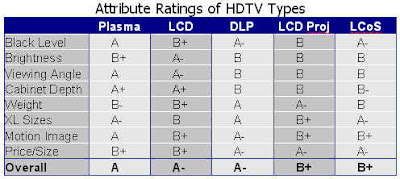Are you looking for inspiration on that new scrapbook? Or are you more inspired by reading books about craps? Are you really far behind on your scrapping and have shoeboxes full of pictures and keepsakes? Or do you often wonder what a keepsake is? In either case, if you’re life is filled with memories that are worth preserving, you should read on. If you’re life has nothing worth remembering, well, I guess you don't really need to worry about digital scrapbooking.
Scrapbooks typically take the form of an elaborate album that documents memories through photographs, clippings, memorabilia, and other printed materials. They may have written narration through a technique called journaling. This multi-billion dollar industry has sold albums, inserts, pages, and huge variety of ways to dress up the pages. The people who engage in theses activities are called scrappers. Though traditional scrapbooking has seen significant growth in popularity, the trend is being influenced by technology. Techies have another excuse to use their gadgets and non-techies have opportunities to enhance their endeavors. Everyone wins!
Why Digital?
Scrappers have recently come under fire for their use of vulgar words and promotion of violent actions in their hip-hop music lyrics. Oh, wait...I’m thinking of rappers. Scrappers have been scrutinized for their overuse of sharp scissors, mounting glues, and rubber stamps. The off-fall from cropped photos has become a nationwide epidemic, increasingly contributing to the overflow of trash in our landfills. Albeit they may not have particularly strong odors, but mounting glues have been suspiciously present at many rambunctious “crops” (i.e. gatherings of radical scrapbookers at homes, stores, or convention centers). Some believe that the glue fumes cause scrappers to leave crops in a disoriented state, driving around and ending up back at an event’s entrance. This forms what are sometimes called “crop circles.” There was even an unconfirmed incident of a scrapper being hospitalized with rubber stamp wounds on her hand and forehead. While the tradition of preserving memories may have some merit, something needs to be done to address these issues. The solution is at hand: digital scrapbooking.
In a type of Martha Stewart meets Bill Gates methodology, we have a sliding scale of efforts to overcome the issues with traditional scrapbooking. On one side of the scale, we see scrappers using digital images and online resources to enhance their current methods. On the other end of the scale, we have a totally digital experience from construction through presentation in DVD form. Somewhere in the middle is a blend of these techniques that creates an easily duplicated physical book from all-digital media. So whether you’re a veteran or a newbie, with a few prunes and some guidance, we’ll have you sitting down and scrapping out piles of good fun.
Digitally Enhanced Traditional Scrapbooks
 For the traditional scrapbooker that enjoys working with their hands and putting together pages with texture, the digital realm is still able to complement their current work. Page layouts may be created and printed multiple times. Labels and names may be printed and added with much greater ease than individual letters. There are a variety of online resources for free and pay themed scrapbook kits that provide matching page borders, overlays, photo frames, trims, and embellishments. For scrappers, these terms are surely familiar. You can visit ComputerScrapbook.com or DigitalScrapbookPlace.com for ideas. Of course, Google can give you a plethora of more options.
For the traditional scrapbooker that enjoys working with their hands and putting together pages with texture, the digital realm is still able to complement their current work. Page layouts may be created and printed multiple times. Labels and names may be printed and added with much greater ease than individual letters. There are a variety of online resources for free and pay themed scrapbook kits that provide matching page borders, overlays, photo frames, trims, and embellishments. For scrappers, these terms are surely familiar. You can visit ComputerScrapbook.com or DigitalScrapbookPlace.com for ideas. Of course, Google can give you a plethora of more options.
Photo/Memory Books
It is possible to use Photoshop-type programs to create entire pages digitally. There are also online resources to help you create these pages if you have the digital photos. Simple tools allow you to upload images and arrange them in various patterns. A variety of backgrounds and journaling opportunities can help spruce things up. These online resources can print and bind the entire hardcover book for you, too. These are usually called photo books or memory books. While 12” x 12” is a more traditional scrapbook size, they can run as much as $70 for a 20 page book. The 11” x 8.5” books tend to be much more cost effective, typically costing $30 for the basic 20 page book. Some publishers to check out include: Shutterfly, Kodak, PhotoWorks, MyPublisher, Picaboo, and Snapfish.
Photo/Video Memory DVDs
You have to take the scrapbook a few steps further to have output that is entirely digital. Although there is some benefit to using digital technology to create printed, bound books, the real leap forward in presentation happens when you can imbed video and music into the journey down memory lane. When you put together a DVD scrapbook of vacationing at Williamsburg, VA, you can use video of the carriage ride and roller coaster at Busch Gardens. Laying on top of the video and slideshow images is a piece of music relavent to the time period. Imagine how much more impact a slideshow of 1980s High School could have when you also hear U2 playing that song your friends used to blast on the car radio.
To create a memory DVD, capturing and editing video comes into play. Almost all new digital cameras are able to capture simple video of lower quality, but better quality will require a digital camcorder. Once the video is captured and moved to a PC, then video editing software will help prepare it for the DVD. The software can help create polished videos that utilize your camcorder video, digital pictures, and music. This is where the creativity can really kick in. The songs can not only bring you back to a time period, but contain lyrics with relevance to stir up emotion. Here is an example of some songs pertinent to big life events:
Birth of a Child
“Send Me Your Money” by Suicidal Tendencies 1990
“Haven't Slept In Years” by Matthew Good 1996
“Cry No More” by Shareefa 2006
Wedding
“Ball and Chain” by Poison 1990
“Why Don't We Get Drunk” by Jimmy Buffett 1976
“Wedding Bells Are Breaking Up That Old Gang Of Mine” by Sammy Fain 1929
Graduation
“Get A Job” by The Silhouettes 1957
“Money for Nothing” by Dire Straits 1985
“Unemployable” by Pearl Jam 2006
So, do you have to like frilly things and doilies to engage in scrapbooking activities? Emphatically, no. Whether you're enhancing a traditional scrapbook or going completely digital with a memory DVD, you can involve the fru fru as much or as little as you like. It might be scrapbooking blaspheme, but you can go through the entire process and never touch a ribbon, bow, corner punch, or dauber. And, thankfully, you will never have to inhale scrapbook adhesives. After all, the last thing you want is to be pulled over by the police for making crop circles.
For further examples of particular hardware and software items described above, you can visit my guide on Amazon.com that provides particular product links.
Secret Agent 007 are called "bondage." You get the idea. Now for an update on "tunage" without DRM: As you may (or may not) recall, DRM is the coding imbedded in most downloaded songs that restricts how the buyer can use the music. This concept was illustrated in my earlier post. Yesterday, as promised a few months ago, Apple® has opened iTunes® Plus, an area for downloading higher-quality, DRM-free music. For a $0.30 per song premium ($1.29 instead of the standard $0.99), the iTunes community can download some songs at a higher quality 256 kbps bit rate, but using AAC encoding without the DRM restrictions. Currently, the major record label supporting this endeavor is EMI, releasing thier entire digital catalog in this manner. This includes singles and albums from Coldplay, The Rolling Stones, Norah Jones, Frank Sinatra, Joss Stone, Pink Floyd, and John Coltrane.
The original versions of the songs will still be available for the standard $0.99. For those songs already in one's collection, it is possible to upgrade previously purchased protected EMI songs for an additional 30 cents. Most albums cost $3.00 to upgrade. Since Apple is always about making things simple, you can see from the image at the left how they are trying to make is easy to upgrade.




 Cale is a technology enthusiast that has worked within the furniture industry since 1994. He has held management positions in manufacturing, industrial engineering, product development, and information technology. In 2001 Cale pioneered a niche make-to-order wood product division that focused on the integration of technology within the home. He won the Pinnacle Design Achievement Award for his first home office collection and was a finalist for his hideaway media center. Cale has a BSME from the University of Arizona, MSE from the University of Texas, and MBA from Duke University.
Cale is a technology enthusiast that has worked within the furniture industry since 1994. He has held management positions in manufacturing, industrial engineering, product development, and information technology. In 2001 Cale pioneered a niche make-to-order wood product division that focused on the integration of technology within the home. He won the Pinnacle Design Achievement Award for his first home office collection and was a finalist for his hideaway media center. Cale has a BSME from the University of Arizona, MSE from the University of Texas, and MBA from Duke University. 
